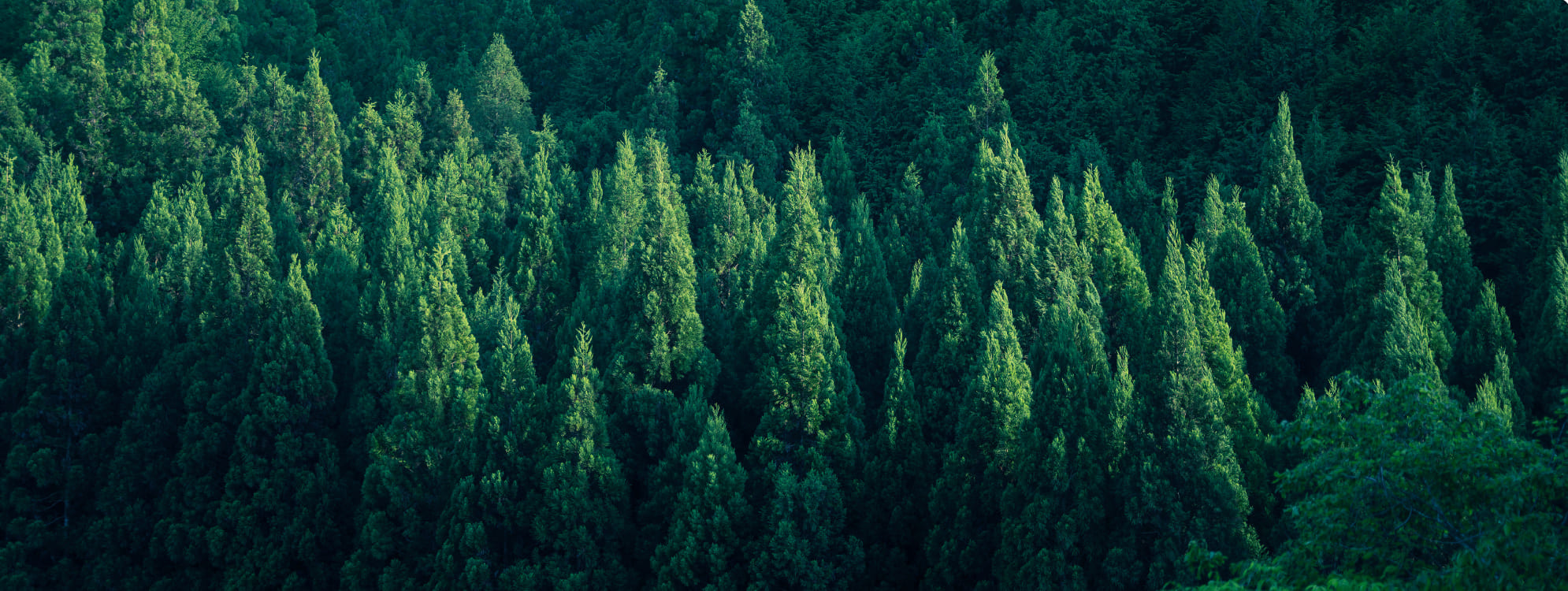Japan is the world’s third most forested country, with forests covering approximately 70% of the nation’s land. The Japanese cedar and Japanese cypress forests that were planted after World War II have grown and are now reaching harvest time. However, 80% of the wood used in Japan is imported, and demand for domestic timber has fallen. This has led to the decline of Japan’s forestry industry, and the country’s forests are starting to degrade.
If forests are taken care of, they will become bright and healthy. Pruning and thinning brings light into the forests, helping plants to grow. Rich ecosystems are formed, and the forests are transformed, becoming more resistant to landslide disasters.
Using timber from forest thinning as resources and planting young trees in logging areas will result in a change of generations, turning them into sustainable resources.

I want to be a wood stove
that makes the forest beautiful.
that makes the forest beautiful.
The forest speaks.
It longs to regain its original beauty.
We nurture managed forest rather than abandoning it.
If we use them wisely, we can ensure that the forest thrives
to revitalize neglected managed forests.
AGNI burns conifers cleanly and completely
using its unique combustion structure.
Conifers like cedar and cypress
were once avoided by conventional wood-burning stoves
due to their tendency to burn quickly and at high temperatures
causing damage to the stove and chimney.
Undergrowth wood can be used as energy
contributing to make forest sustainable.
Not only the flames but also the forest and the earth are made beautiful
by AGNI.
It longs to regain its original beauty.
We nurture managed forest rather than abandoning it.
If we use them wisely, we can ensure that the forest thrives
to revitalize neglected managed forests.
AGNI burns conifers cleanly and completely
using its unique combustion structure.
Conifers like cedar and cypress
were once avoided by conventional wood-burning stoves
due to their tendency to burn quickly and at high temperatures
causing damage to the stove and chimney.
Undergrowth wood can be used as energy
contributing to make forest sustainable.
Not only the flames but also the forest and the earth are made beautiful
by AGNI.
For Healthy Forests

Carbon neutral


Softwoods as fuel
Japan’s forests can be broadly divided into planted forests and natural forests. Planted forests have been grown by human hands primarily for the purpose of producing timber. Almost all of these forests are softwood varieties, such as Japanese cedar and Japanese cypress. AGNI was created as a way to make use of the wood from the thinning of these forests as energy in wood stoves and to contribute to forest development. The use of softwoods such as Japanese cedar and Japanese cypress has commonly been avoided in wood stoves because they are said to burn out too quickly and they burn too hot, causing damage to the stove and flue.
AGNI has responded to these problems with the combination of AGNI Bell Cast (thick-walled inner box construction), which we have cultivated over many years, and our proprietary AGNI Efficient Burning system, realizing clean, complete combustion of softwoods. Softwoods can now be burned with peace of mind as a valuable type of firewood.
AGNI has responded to these problems with the combination of AGNI Bell Cast (thick-walled inner box construction), which we have cultivated over many years, and our proprietary AGNI Efficient Burning system, realizing clean, complete combustion of softwoods. Softwoods can now be burned with peace of mind as a valuable type of firewood.






